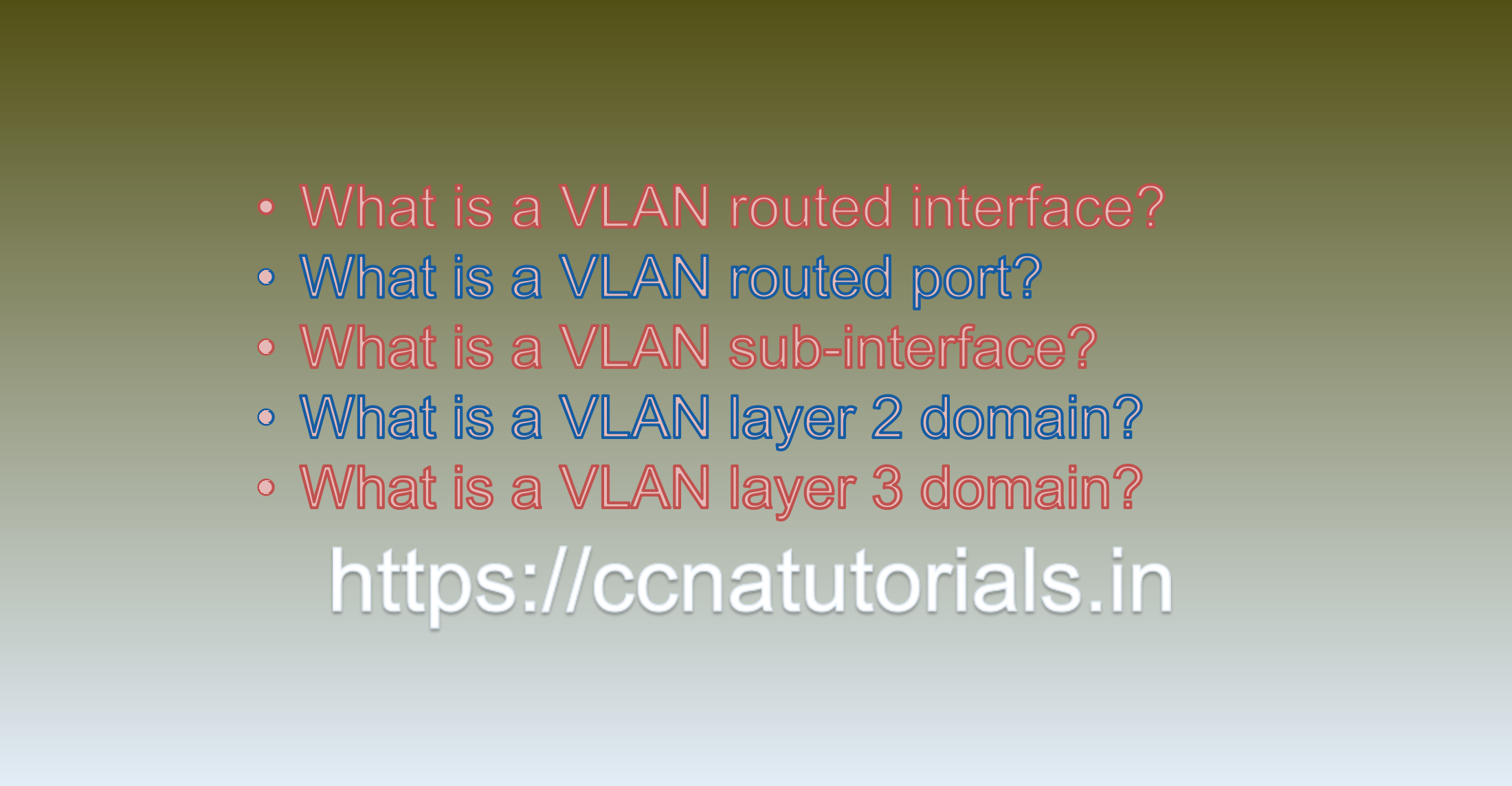Contents of this article
In this article, I describe some CCNA sample questions for practice before appearing in the CCNA 200-301 exam. The following questions are basic questions and related to the CCNA sample questions set 28. There are multiple sample questions set on this website for prior practice online. All questions are described with relevant answers. You can take the following questions and answer as reference for CCNA 200-301 exam. You may also need to do more practice with other websites and books to practice the CCNA sample questions set 28.
Question 1. What is a VLAN routed interface?
A VLAN routed interface is a virtual interface that is configured to provide Layer 3 (routing) services for a particular VLAN. It is used to enable communication between different VLANs within a network. When traffic from one VLAN needs to be routed to another VLAN, it is sent to the VLAN routed interface, which then forwards the traffic to the appropriate VLAN. VLAN routed interfaces are typically configured on layer 3 switches or routers, and are used in conjunction with VLANs to help segment and manage network traffic. This is the answer to question 1 of CCNA sample questions set 28.
Question 2. What is a VLAN routed port?
A VLAN routed port is a type of interface on a network device (such as a switch or router) that is assigned to a specific VLAN and is configured to perform layer 3 (routing) functions. Essentially, it is a port on a switch that is configured to act like a router interface for a specific VLAN. This means that the VLAN routed port can communicate with other networks and VLANs, rather than just within its own VLAN like a regular switch port. VLAN routed ports are commonly used in scenarios where VLANs need to be segmented and routed between different parts of a network. This is the answer to question 2 of CCNA sample questions set 28.
Question 3. What is a VLAN sub-interface?
A VLAN sub-interface is a virtual interface created on a physical network interface, allowing multiple virtual interfaces to be created on a single physical interface. Each sub-interface is assigned to a specific VLAN, allowing different VLANs to communicate over a single physical link. VLAN sub-interfaces are commonly used in router-on-a-stick configurations, where a router with a single physical interface can route traffic between multiple VLANs. This is the answer to question 3 of CCNA sample questions set 28.

Question 4. What is a VLAN layer 2 domain?
A VLAN layer 2 domain is a group of network devices, typically switches, that are configured to be in the same Virtual LAN (VLAN) and can communicate with each other without the need for a router. The devices in a VLAN layer 2 domain can communicate with each other at Layer 2 of the OSI model (data link layer) through broadcast, unicast, or multicast traffic. VLAN layer 2 domains provide a way to logically separate a network into multiple broadcast domains, improving network performance and security. This is the answer to question 4 of CCNA sample questions set 28.
Question 5. What is a VLAN layer 3 domain?
A VLAN layer 3 domain is a logical network segment that is created by grouping multiple VLANs that share the same IP subnet. In other words, it is a collection of VLANs that are interconnected using a Layer 3 device, such as a router or a layer 3 switch, and that have the same network address space.
The purpose of a VLAN layer 3 domain is to enable traffic routing between VLANs within the same IP subnet, without having to route traffic out to a router or other Layer 3 device. This can help to improve network performance and reduce network traffic by keeping local traffic within the same Layer 3 domain.
VLAN layer 3 domains are commonly used in large enterprise networks, where there is a need for more granular network segmentation and routing control. They can also be used in data centers to create virtualized network segments for different applications and services. This is the answer to question 5 of CCNA sample questions set 28.
Conclusion for CCNA sample questions set 28
In this article, I described 5 questions with answers related to CCNA 200-301 exam. I hope you found these questions helpful for the practice of the CCNA 200-301 exam. You may drop a comment below or contact us for any queries related to the above questions and answers for CCNA 200-301. Share the above questions If you found them useful. Happy reading!!






